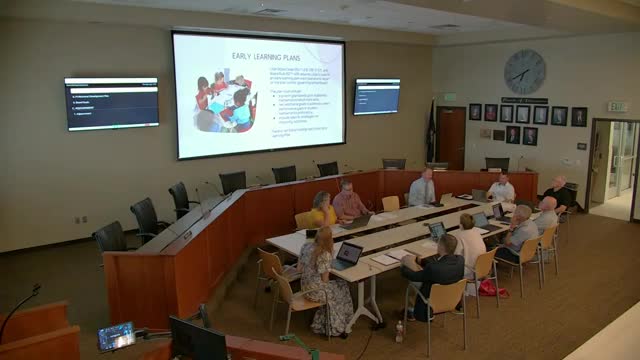Educational Leaders Set Math Proficiency Goals for First and Third Graders
August 08, 2025 | Cache County School District, Utah School Boards, Utah
This article was created by AI summarizing key points discussed. AI makes mistakes, so for full details and context, please refer to the video of the full meeting. Please report any errors so we can fix them. Report an error »

In a recent study session held on August 7, 2025, the Utah School Board focused on addressing performance gaps in student mathematics proficiency. The meeting underscored the necessity for two additional goals aimed at improving outcomes for students, particularly in early grades. The discussions highlighted a strategic approach to mathematics education that emphasizes conceptual understanding, procedural fluency, strategic thinking, and a positive mathematical mindset.
A key point raised was the importance of moving away from traditional timed testing methods, which have been shown to hinder student enjoyment and understanding of math. Instead, educators are encouraged to adopt alternative strategies that promote visualization and comprehension. This shift aims to help students grasp the underlying concepts of mathematics rather than merely memorizing procedures. The board emphasized that students should engage in activities that foster a deeper understanding of why math is used to solve problems.
The board set specific goals for student performance, including a target for at least 60% of first through third graders to achieve typical growth on the Acadian's math assessment. Additionally, the district aims to increase first-grade students' missing number fluency by 6% and improve third-grade computation scores by 3% by the end of the academic year. These goals were developed based on data analysis and reflect the concerns of teachers and district specialists regarding student performance.
The meeting concluded with a commitment to ongoing evaluation and support for teachers as they implement these new strategies. The board's focus on enhancing math education through innovative teaching methods and clear performance goals signals a proactive approach to improving student outcomes in Utah's schools. As the district moves forward, the emphasis will remain on fostering a positive learning environment that encourages students to engage with mathematics meaningfully.
A key point raised was the importance of moving away from traditional timed testing methods, which have been shown to hinder student enjoyment and understanding of math. Instead, educators are encouraged to adopt alternative strategies that promote visualization and comprehension. This shift aims to help students grasp the underlying concepts of mathematics rather than merely memorizing procedures. The board emphasized that students should engage in activities that foster a deeper understanding of why math is used to solve problems.
The board set specific goals for student performance, including a target for at least 60% of first through third graders to achieve typical growth on the Acadian's math assessment. Additionally, the district aims to increase first-grade students' missing number fluency by 6% and improve third-grade computation scores by 3% by the end of the academic year. These goals were developed based on data analysis and reflect the concerns of teachers and district specialists regarding student performance.
The meeting concluded with a commitment to ongoing evaluation and support for teachers as they implement these new strategies. The board's focus on enhancing math education through innovative teaching methods and clear performance goals signals a proactive approach to improving student outcomes in Utah's schools. As the district moves forward, the emphasis will remain on fostering a positive learning environment that encourages students to engage with mathematics meaningfully.
View full meeting
This article is based on a recent meeting—watch the full video and explore the complete transcript for deeper insights into the discussion.
View full meeting

